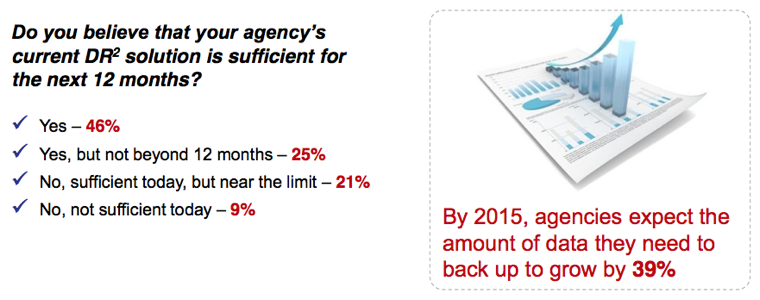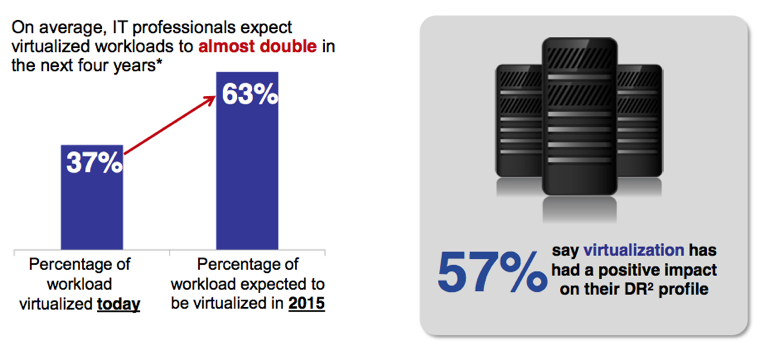A Disaster Recovery Snapshot: Agencies Aren’t Ready
Natural disasters like Hurricane Sandy and the Moore, Okla., tornadoes have prompted federal agencies to examine their disaster recovery plans. Complicated by factors such as budget, sequestration, growing data and a heightening demand for transparency, federal agencies are struggling to keep pace. A recent MeriTalk survey examined the disaster recovery landscape and asked federal IT leaders what they expected to see over the next few years.
Just eight percent of respondents said their agency is completely prepared to recover data if an emergency occurred today. Not every question resulted in such a discouraging answer, but it’s clear that agencies have their work cut out for them.
Right now, recovery isn’t realistic.
Perhaps the most pressing issue facing disaster recovery efforts is the rate at which data is growing. More than half of survey respondents indicated that their agency’s disaster recovery strategy is sufficient for one year at most. What does that mean for the future? If the past is a gauge, agencies will catch up to today’s data storage and backup needs a year or two too late.
As indicated in the image above, data will expand by 39 percent by 2015. According to MeriTalk, “the average agency has 51 percent capacity left in its current backup solution.” This buffer could provide agencies the breathing room needed to prepare their systems for the future.

More data means more testing.
It’s evident that some agencies recognize their shortcomings. One-third of the federal IT workers surveyed said their agency had not tested the ability to recover data in the last 12 months.
Mobile computing is complicating the disaster recovery issue. Nearly every agency has the ability to remotely wipe employees’ devices if necessary, but respondents said they would be able to recover only about half of mobile data. Like data, mobile usage is growing rapidly and in the future will need to become a focus for agencies.

Virtualization is key to improving disaster recovery.
Workloads on virtualized machines are estimated to grow by 26 percent by 2015. Centralizing computer power, especially for mobile devices like smartphones and tablets, will be critical to optimizing data recovery plans. Rather than addressing myriad devices, IT departments can focus on important servers. This lessens the burden and should also make backup and recovery less expensive.

How is your agency handling recovery and backup? Let us know in the Comments section.








